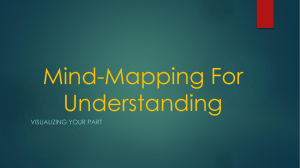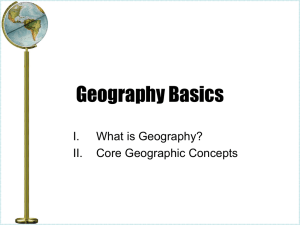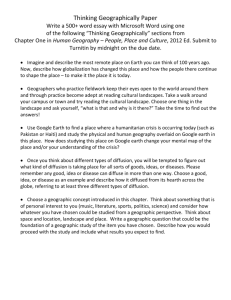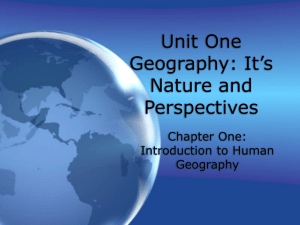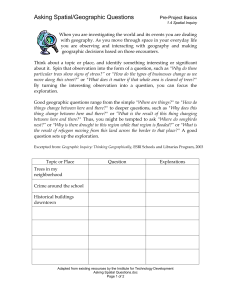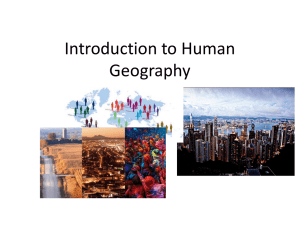Introduction to Human Geography
advertisement
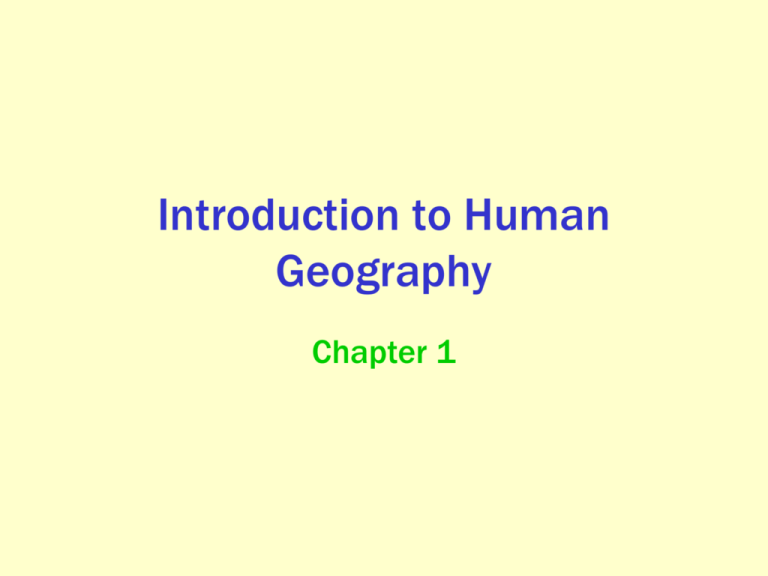
Introduction to Human Geography Chapter 1 Human Geography • The study of how people make places, how we organize space and society, how we interact with each other in places and across space, and how we make sense of others and ourselves in our locality, region, and world. Globalization A set of processes that are: - increasing interactions - deepening relationships - heightening interdependence without regard to country borders. A set of outcomes that are: - unevenly distributed - varying across scales - differently manifested throughout the world. Geographic inquiry focuses on the spatial: - the spatial arrangement of places and phenomena (human and physical). - how are things organized on Earth? - how do they appear on the landscape? - why? where? so what? Spatial distribution What processes create and sustain the pattern of a distribution? Dot Map of Cholera Victims in London’s Soho District in 1854. The patterns of victim’s homes and water pump locations helped uncover the source of the disease. Five Themes of Geography • Location • Human-Environment • Region • Place • Movement Place Sense of place: infusing a place with meaning and emotion. Perception of place: belief or understanding of what a place is like, often based on books, movies, stories, or pictures. Perception of Place Where Pennsylvanian students prefer to live Where Californian students prefer to live Movement Spatial interaction: the interconnectedness between places depends upon: Distance Accessibility Connectivity Culture Culture is an all-encompassing term that identifies not only the whole tangible lifestyle of peoples, but also their prevailing values and beliefs. - cultural trait (examples?) - cultural complex (example?) - cultural hearth Cultural Landscape •The visible human imprint on the landscape. •Carl Sauer is most noted geographer of CL Religion and cremation practices diffuse with Hindu migrants from India to Kenya. Sequent Occupance Layers of imprints in a cultural landscape that reflect years of differing human activity. Athens, Greece ancient Agora surrounded by modern buildings Sequent Occupance Dar es Salaam, Tanzania African, Arab, German, British, and Indian layers to the city. Apartment in Mumbai, India Apartment in Dar es Salaam, Tanzania Two Types of Maps: Reference Maps - Show locations of places and geographic features - Absolute locations Thematic Maps - Tell a story about the degree of an attribute, the pattern of its distribution, or its movement. - Relative locations What are reference maps used for? What are thematic maps used for? Reference Map Thematic Map What story about median income in the Washington, DC area is this map telling? Mental Maps: maps we carry in our minds of places we have been and places we have heard of. can see: terra incognita, landmarks, paths, and accessibility Activity Spaces: the places we travel to routinely in our rounds of daily activity. How are activity spaces and mental maps related? Geographic Information System: a collection of computer hardware and software that permits storage and analysis of layers of spatial data. Remote Sensing: a method of collecting data by instruments that are physically distant from the area of study. Key Question: Why are Geographers Concerned with Scale and Connectedness? Scale Scale is the territorial extent of something. The observations we make and the context we see vary across scales, such as: - local - regional - national - global Scale Regions Formal region: defined by a commonality, typically a cultural linkage or a physical characteristic. EX: German speaking region of Europe Functional region: defined by a set of social, political, or economic activities or the interactions that occur within it. EX: an urban area (city & its surroundings) Regions Perceptual Region: ideas in our minds, based on accumulated knowledge of places and regions, that define an area of “sameness” or “connectedness.” (informal) EX: the South the Mid-Atlantic the Middle East

